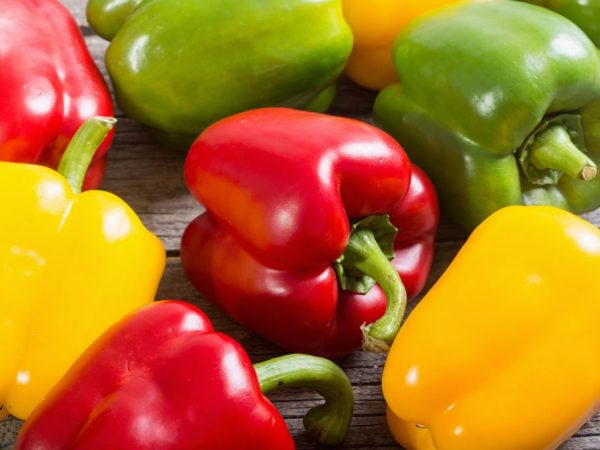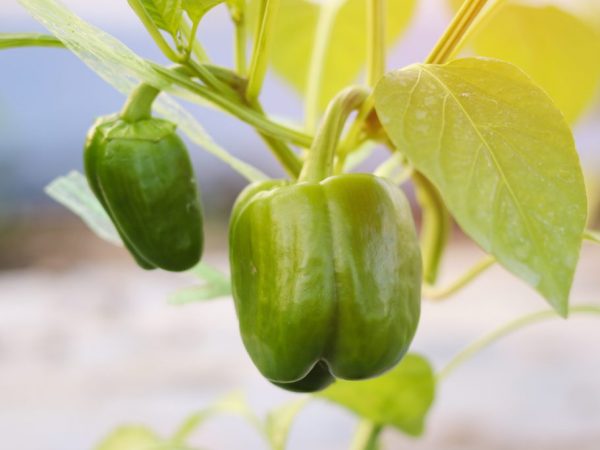Rules for growing sweet peppers
To grow sweet peppers to bring pleasure and good results, you need to know all the features of this process. The culture is capricious, heat-loving and susceptible to disease. A high yield can be obtained with the correct production of agrotechnical measures.

Rules for growing sweet peppers
Growing seedlings
Many people plant pepper seeds at home. Healthy seedlings are the key to a good harvest. To do this, you need to follow some rules.
Sowing dates
Growing seedlings on a windowsill takes about 3 months. So that at the end of May it was possible to land them in a permanent place, the planting material is embedded in the soil around the 20th of February. The timing is adjusted according to the selected variety, as well as the growing conditions - open or closed ground.
Semen preparation
To select quality seeds, you need to soak them in water. Full-bodied ones will sink to the bottom, hollow ones will float up.
Small and damaged seeds are also selected. Then they are etched. For this purpose, the planting material is placed in a gauze bag and soaked in a solution of potassium permanganate for 20 minutes. For disinfection, any fungicides are also used: Fitosporin-M, Maxim, Vitaros, etc. After processing the seeds, they are washed and dried.
To saturate with nutrients, soak for 12 hours in a solution of the Epin preparation (1-2 drops per 100 ml of water). Washed and dried. Then a bandage or gauze is folded in several layers, the material is moistened and seeds are placed on it. Cover in the same way. Leave warm (25˚C). It is worth making sure that the fabric remains wet at all times. To do this, place it in a plastic box with a lid, which is opened every day for airing. After 1-2 weeks, the grains will pick up.
Soil preparation
You can plant seeds in ready-made potting mix. But in order to grow quality seedlings, it is better to cook it yourself. To do this, take:
- humus - 2 parts;
- peat - 2 parts;
- sand - 1 part.
For 1 kg of the composition add 1 tbsp. l. wood ash. Such components will provide a loose and light texture to the mixture. To protect the seedlings from diseases, it is watered with a solution of potassium permanganate. The earth is poured into prepared containers: boxes, plastic cups, peat pots. To leave excess moisture, drainage from crushed bricks is laid on the bottom of the container.
Sowing
The seeds are planted in damp soil. Cover with a layer of mixture of 0.5 cm. Before the emergence of shoots, cover with plastic wrap, which is regularly removed to ventilate the crops. Leave warm (22 ° C).
Care

Pepper needs fertilization
Growing sweet pepper seedlings at home involves placing them in a healthy environment. For this, the containers are installed in a well-lit place. Daylight hours for sprouts are 12 hours, so they are supplemented with phytolamps.The temperature after sprouting is lowered to 15-17˚С, after 5-7 days it is increased to 22-24С. Two weeks before planting, the plants are stabbed. The room in which the seedlings are located is periodically ventilated. Vessels with sprouts should not get caught in a draft.
Sweet pepper seedlings need moderate watering. The soil is moistened with warm, settled water as its upper layer dries up.
Seedling care includes feeding:
- In the phase of 3 true leaves (after picking), a solution is prepared: 40 g of superphosphate, 30 g of potassium sulfate, 10 g of ammonium nitrate per 10 liters of water. Consumption - 50 ml for each plant.
- Two weeks after the previous one, use the same composition.
An ash solution is also used as a nutritional agent: a glass of a substance on a bucket of water.
Picking
If the seeds are planted in a common container, then the seedlings in the phase of 2 true leaves are transplanted separately. The technology of the process consists in the following actions:
- the soil is well moistened;
- the plants are removed using a wooden spatula along with a lump of earth;
- if the root is too long, pinch it.
After picking, the seedlings are left in the same place with the same temperature regime.
Transplanting
Sweet peppers are planted in open ground when the soil warms up well, and the temperature indicators are set at 15-17˚С. This approximately falls at the end of May - beginning of June. Greenhouses are planted at the beginning of April, and in tunnel structures at the end of May. The landing pattern is 40 * 40 cm.
Bell pepper grows well on light soil. It is prepared in this way:
- in the fall, 50 g / m2 of potash and phosphorus fertilizers are dug up;
- in spring 40 g / m2 of ammonium nitrate;
- 5 days before disembarkation, disinfection is carried out with a solution of copper sulfate: 1 tbsp. l. for 10 liters of water;
- clay soils are improved with peat and humus.
To fertilize the planting holes, complex preparations are used, dosing 1 tbsp. l. one recess. Plants are removed together with an earthen clod. When planting, the root collar should not be covered. Produce abundant watering.
The beds that are in an open area are covered with a special material. When the threat of a drop in temperature has passed, the shelters are removed.
Adult plant care

Good care will provide you with a rich harvest
The secrets of growing bell peppers are to provide them with optimal conditions.
Watering and loosening
The first time the soil is moistened 5 days after planting the plants. Watering should be frequent until they take root. Then water is added as the topsoil dries up. During the fruiting period, more often - 2 times a week.
The soil is loosened 3-4 times per season. This is done carefully, since bell peppers have a superficial root system. Weeds are removed at the same time. With the second loosening, some gardeners huddle the plants.
Stepson and garter
Cultural agrotechnology includes the correct formation of the bush. For this purpose, remove the shoots that are located below the central fork of the stem. Too long - shorten. Sick and damaged parts of the bush are also cut off. Leave 4-5 main shoots, which will bear fruit. The lower ones are removed in hot, humid weather, but not in drought. To increase the yield, pinch the top.
Tall varieties require a garter. To do this, when planting, a peg is installed, to which bushes are attached in the future.
Top dressing
Peppers can be grown successfully if fertilized correctly. Plants are fed according to the following scheme:
- Flowering begins 2 weeks after planting, around this time. Use a solution of mullein (1:10) or bird droppings (1:15). A good effect is given by a solution of mineral fertilizers: 40 g each of superphosphate and ammonium nitrate, 20 g of potassium sulfate, 10 liters of water.
- 2 weeks after the previous one, when the ovaries are forming.This infusion is used: one glass of urea, half a bucket of bird droppings, 1 bucket of last year's manure, 100 liters of water, leave for a week. Consumption - 0.5 buckets per 1 sq. m.
It is important to alternate organic and mineral fertilizers. The culture does not accept an excess of nutrients, therefore, their amount must be strictly controlled.
Diseases - pests
Growing pepper at home includes the fight against diseases, among which are:
- white and apical rot;
- late blight;
- macrosporiosis;
- septoria;
- blackleg.
For prophylactic purposes, antifungal drugs Trichodermin, Alirin are used, dosing according to the attached instructions. It is worth carrying out the correct pre-sowing seed treatment. It is also important to monitor the moisture content of the soil.
The culture is often affected by such pests:
- scoop;
- slugs;
- whitefly;
- aphid;
- spider mite.
To combat them, the bushes are powdered with wood ash, and infusions of tansy, garlic, and wormwood are prepared. Plants are treated with serum. Apply drugs Karbofos, Keltan.
Conclusion
Growing sweet peppers in your country house will not be difficult if you know all the subtleties of the process. Much attention should be paid to caring for seedlings and adult plants, since this is the main concern.
Activities will differ slightly depending on the variety chosen, as well as on the place of planting of seedlings. Timely detection of diseases will help protect crops from damage.


